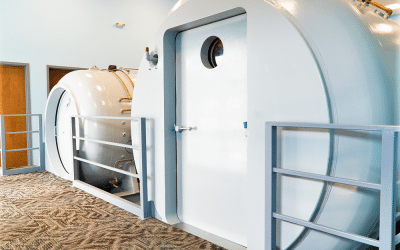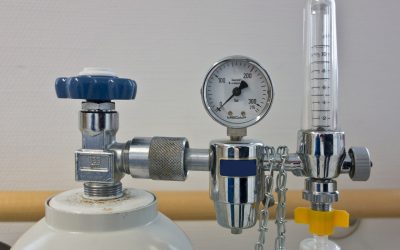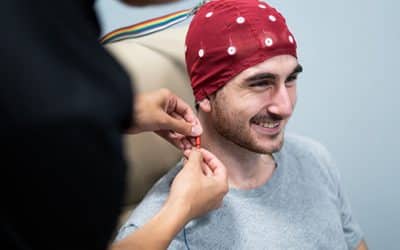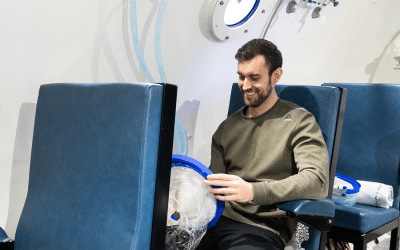Traditionally, hyperbaric oxygen treatment (HBOT) has been used to treat a limited repertoire of disease, including decompression sickness and healing of problem wounds. However, some investigators have used HBOT to treat inflammatory bowel disease (IBD), including Crohn’s disease and ulcerative colitis. Comprehensive searches were conducted in 8 scientific databases through 2011 to identify publications using HBOT in IBD. Human studies and animal models were collated separately. Thirteen studies of HBOT in Crohn’s disease and 6 studies in ulcerative colitis were identified. In all studies, participants had severe disease refractory to standard medical treatments, including corticosteroids, immunomodulators and anti-inflammatory medications.
Inflammatory Bowel Disease
Explore the latest research on the use of Hyperbaric Oxygen Therapy (HBOT) to treat Inflammatory Bowel Disease. Extivita maintains an extensive publication database for Inflammatory Bowel Disease and various other indications with therapies such as Hyperbaric Oxygen Therapy, Neurofeedback, Nutritional IV Therapy, Infrared Sauna, and Pulsed Electromagnetic Field Therapy. Explore our database on Acne and Hyperbaric Oxygen Therapy aka, HBOT, below.
For a complete list of indications treated at Extivita, explore the conditions we treat.
Hyperbaric oxygen treatment for inflammatory bowel disease: a systematic review and analysis.
Abstract: Traditionally, hyperbaric oxygen treatment (HBOT) has been used to treat a limited repertoire of disease, including decompression sickness and healing of problem wounds. However, some investigators have used HBOT to treat inflammatory bowel disease (IBD),...
Hyperbaric oxygen – its mechanisms and efficacy
Principal mechanisms of HBO2 are based on intracellular generation of reactive species of oxygen and nitrogen. Reactive species are recognized to play a central role in cell signal transduction cascades and the discussion will focus on these pathways. Systematic reviews and randomized clinical trials support clinical use of HBO2 for refractory diabetic wound healing and radiation injuries; treatment of compromised flaps and grafts and ischemia-reperfusion disorders is supported by animal studies and a small number of clinical trials, but further studies are warranted.
Crohn’s disease and hyperbaric oxygen therapy.
Abstract: Evaluate the application of Hyperbaric Oxygen Therapy (HBO) in patients with Crohn's disease (CD) refractory to pharmacologic therapy, who developed abdominal, anorectal or skin complications. Fourteen selected patients with refractory CD and treated at the...
Oxygen sensing, homeostasis, and disease
Abstract [No Abstract Available] Semenza GL. Oxygen sensing, homeostasis, and disease. N Engl J Med. 2011 Aug 11;365(6):537-47. doi: 10.1056/NEJMra1011165. Erratum in: N Engl J Med. 2011 Sep 8;365(10):968. PMID: 21830968.
Is alpha wave neurofeedback effective with randomized clinical trials in depression? A pilot study
Abstract Frontal asymmetric activation has been proposed to be the underlying mechanism for depression. Some case studies have reported that the enhancement of a relative right frontal alpha activity by an asymmetry neurofeedback training leads to improvement in...
Hyperbaric oxygen stimulates vasculogenic stem cell growth and differentiation in vivo
We hypothesized that oxidative stress from hyperbaric oxygen (HBO2, 2.8 ATA for 90 min daily) exerts a trophic effect on vasculogenic stem cells.
The efficacy of hyperbaric oxygen (HBO2) for healing refractory wounds in diabetic patients and those with radiation injuries has been shown in randomized trials, and its utilization is supported by independent evidence-based reviews (6, 10, 20, 32, 38). Mechanisms of action for HBO2 are not clear. The goal of this study was to examine the impact of HBO2 on vasculogenic stem cells in an in vivo animal model.
Expanded adipose-derived stem cells for the treatment of complex perianal fistula including Crohn’s disease
Abstract Background: Complex perianal fistulising disease is a distressing condition. In patients without Crohn's disease, surgery is the mainstay treatment but faecal incontinence and recurrence are high. Infliximab is used in Crohn's patients but not all respond to...
Expanded adipose-derived stem cells for the treatment of complex perianal fistula including Crohn’s disease
In patients without Crohn’s disease, surgery is the mainstay treatment but faecal incontinence and recurrence are high. Infliximab is used in Crohn’s patients but not all respond to therapy. Objective: After an evaluation of the current treatment options, we discuss studies of adipose-derived stem cell (ASC) therapy, a novel approach for treating complex perianal fistulas.
Methods: ASCs are obtained from a liposuction procedure and a subsequent expansion process. They are administered according to a strict protocol which involves infusion of the cells into the target lesion along with fibrin glue.






